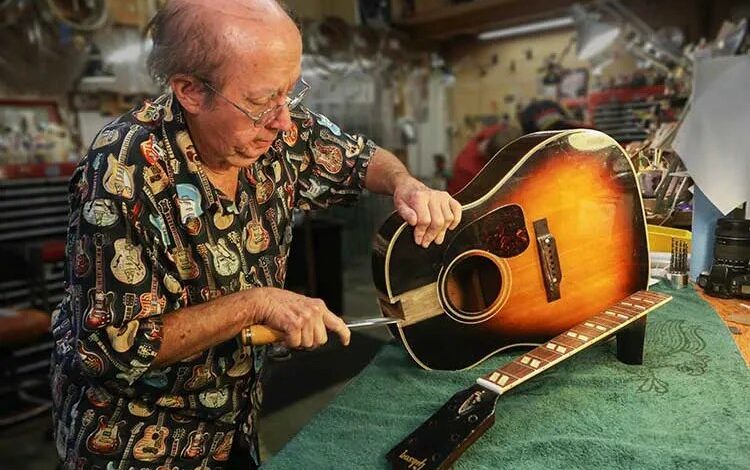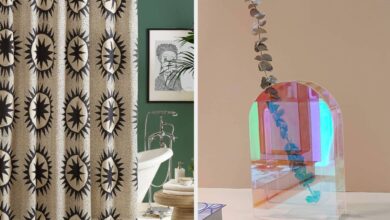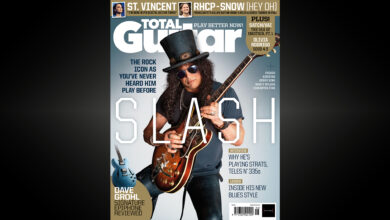Remembering Innovative Guitar Repair Guru Frank Ford

The best repair techs are those whose work is invisible. If done right, a perfect repair disappears completely, leaving behind nothing but a story. Last December, the community of luthiers and vintage guitar collectors lost the brilliant and influential Frank Ford, who died after a brief illness at 79. The legacy Ford leaves behind is much greater than just the story of his work—it is also one of community, innovation, education, and friendship.
Born and raised in Menlo Park, California, Ford spent his whole life right around the corner from Gryphon Stringed Instruments, the shop in Palo Alto where he would work his entire five-decade career. An avid cyclist, Ford spent many hours riding the hills with friends, but his true passion was his work—year in and year out, sitting at the bench in one of his trademark Hawaiian shirts, exploring new horizons in what was possible in instrument restoration and repair. The steel-string guitar is young compared to the violin-family instruments—and thus, the techniques for repairing it have evolved within our living memories. Ford’s ingenuity led him to create and refine techniques that have become standard practice.
Beyond the traditional skills of a repair luthier, Ford was a self-taught machinist, inventing and refining tools and techniques both inside and outside the workshop. Unhappy with his prosaic plastic string winder, he created his own brass and wood model called Frank’s Crank, which now graces workbenches of luthiers around the country. Other devices, such as his Jack the Gripper input jack tightening tool, have also become standard equipment.
In the process of building a gigantic bass banjo, Ford developed a brilliant cycloidal gear tuner, preserving the classic appearance of vintage tuners while vastly improving their smoothness and accuracy. When the specifications of commercially available woodworking machines didn’t suit the job at hand, he was quick to re-machine, modify, or in some cases completely redesign these tools. And well beyond the guitar work, his website teems with photo essays on such topics as repurposing his mill to bend greenhouse hoops, and even properly sharpening a potato peeler—complete with his preferred recipe for mashed potatoes!
That website, Frets.com, was one of his greatest contributions to the community of luthiers. For years, Ford photographed and documented his work, creating an archive of photo essays that guide the reader through every nuance of the repair. The site remains one of the most valuable resources on guitar repair, and it perfectly illustrates his way of thinking; the pages teach not only the methods of repair but the theory and concepts behind those methods.
If a tool didn’t exist to do a particular job, Ford would design and build one, and document that process as well. This extends to the site itself, which he coded and built on his own, and hosted from a computer in his home. Though the design is clearly of a bygone web era, Ford kept it as it was, so he could maintain and repair it himself. Frets.com is a master class in instrument repair and an enormously valuable gift to the world of repair lutherie.
As an employer, Ford was beloved by all who spent time in the Gryphon shop. He cared for his friends and colleagues as much as for the vintage instruments that he so lovingly repaired, and was able to maintain the shop’s quality while coping with the ever-increasing workload brought on by Gryphon’s reputation as a repair shop of the highest caliber.
“His crew here was basically his family,” says Brian Michael, a 20-year veteran at Gryphon and current head of the repair shop. “He didn’t have kids. It was all about just shared knowledge and talking about guitars—that was his whole life. He never wanted to go on vacation. Those symposiums were his version of that, or going to Roberto-Venn [School of Luthiery] to do a lecture, that was as much as he ever traveled.”
Michael recalls how, when he began working at Gryphon, straight from lutherie training at Roberto-Venn, Ford took him under his wing. “I hit the ground running, and Frank was such a good teacher that he just encouraged me to try anything,” Michael says. “When I came here it was less chaotic, so Frank had the time to get into jobs with me. He had me replace the fingerboard on a 1941 D-18, when I really had no business doing that. But he just said, ‘We can do this; let’s just start, heat it up, and we’ll get it off.’ He was good at finding the best qualities of anyone that worked here.”
To learn more about Ford’s work and legacy, as well as his life outside the shop, I spoke with Richard Johnston, who co-founded Gryphon Stringed Instruments with Ford in 1969. In addition to his work at Gryphon, Johnston is an appraiser, historian, and author of numerous books on vintage instruments.
What can you tell me about how Frank grew up?
His family lived in a neighborhood not very far from here. He said that you never saw a service truck in their driveway. His father and grandfather fixed everything. So a lot of the innovation and the willingness to dive in, even if you didn’t know exactly what you were doing, came from his father. The grandfather had been an inventor. The story was that he was within striking distance of having patented some kind of microwave. And Frank’s father and grandfather built a boat together. These were both very hands-on guys, and that was the climate that he grew up in. Frank graduated from Menlo-Atherton high school and then went straight to UC Santa Barbara. Shortly after that he moved to Palo Alto. We met through mutual friends in the music scene, and he would come to Berkeley and see me, or I would drive down and visit him.
Did Frank have much of a background as a musician?
No. I don’t know when he learned guitar and mandolin. I’m guessing after he went to college. He was kind of an outsider, a nerdy guy. He had an interest in vintage clothing at an early age—once bought a full top hat, suit, and tails and wore it to high school, and was promptly called into the principal’s office and sent home—which he always found kind of amusing. He did play with explosives, and that’s probably about as close to the more typical boy hijinks, experimenting with making pipe bombs and things like that.
When you have his technical outlook, those kinds of things would be terribly interesting.
Sure. And we continued that here. We used to blow up a guitar on the July 4th holiday, and Frank took it a step further. We would tape an M-80 inside the top, just below the bridge plate with the fuse sticking up, and we’d blow it up, and the neck would arch up in the air. Once the fretboard came off, and the frets came out and tinkled down onto the pavement. He wanted a photo of that, so he rigged up two electrical wires with the ends close together, but not touching, with a trigger switch so that his camera would fire at the same time.
Was he already working on guitars when you met?
He’d built a dulcimer. I don’t think he’d built a guitar or mandolin yet, but he’d done some work on his D-28. I had bought and sold guitars and was doing setups. We didn’t realize what we were getting into, but we just thought, let’s try building some guitars. We started with the idea of building replicas of the Stella Lead Belly 12-string.
Is that what you were building when you were making guitars?
No, we built dreadnoughts, 000s, and banjo necks. By October of ’69, we’d started using the Gryphon name, pooling resources, buying wood, and building guitars. The logo was a flying Gryphon designed by Rick Shubb, of Shubb Capos, who at the time was doing a lot of art and playing banjo.
When did Gryphon open its doors?
We opened the retail store in ’73. Frank was the one who wanted to open a shop, because he realized we needed one to survive. He had run a bike shop, so it wasn’t intimidating to him. I couldn’t imagine it, but it was obvious that we weren’t going to be able to make a living building instruments, because it was just too time consuming. We opened the store, and it became apparent that there hadn’t been anybody doing serious repair for guitars, mandolins, and banjos in the area. So, we were inundated with work.
When we did the math of how much repair work you could do in the length of time it would take you to build a guitar, it was like, well, we’re not going to build any more guitars. We tried our hand at mandolins, only completing three, and still made banjo necks. But past mid-1973, the guitar making came to a stop and we were fully retail. We became the Martin warranty station, which put us on the map for doing repairs. And that was our foot in the door to be a Martin dealer.
I’ve spoken to a bunch of folks who worked with Frank over the years, and every one of them emphasized that he almost seemed to care more about his people than about the guitars.
Well, he got his degree in biology from UC Santa Barbara, and worked for a place called Santa Barbara Research. I don’t know what they were doing, but I remember that he found the conditions there ridiculously lax, considering what protocols they could have put in place to reduce the chance of injury.
He was more safety-oriented than most. He drilled the guys about using push sticks for the saw and other safety stuff, wearing safety glasses—we have a poster on the wall of a face with something aiming into the eyes, and it says, “Only protect the eyes you wish to keep.” Another thing that set Gryphon apart, and I credit Frank more than myself for this—what we now think of as the male gaze, I don’t think he ever had it. He never treated women differently, and he didn’t tolerate guys that would make derogatory comments about how women looked or any of that stuff. He would just shut that down, and it really changed the tenor of the store.
One thing Frank really embodied for me as a repair person was the evolution of how the best practice for repair has changed so much since the early ’70s. He was a bridge between the different eras.
Both of us have had to calm people down when they’re looking back at how things were done and commenting about what a hack job it was. And Frank would lead the charge saying, “You know, that was then; this is now.” The Gibson L-00 that you are saying has been trashed by repair was probably only worth $30 at the time. The idea that you were going to employ the methods that we use now just wasn’t realistic. It’s hard to condemn someone for using the techniques that they had, just to put bread on the table. Frank was always adamant about that.
One thing Frank did best was that when people had objections or questions or unreasonable expectations for how their guitars functioned or didn’t function, he would spend as long as it took. He would explain over and over, and never tired of it, until eventually they would understand, and he would never get frustrated. I think he probably enjoyed it as much the last time he did it as he did earlier.
But I think that Frank’s patience in explaining things is at the heart of it, as well as the inventiveness that he brought to the craft. The willingness to explain things and, and the kind of bond that that creates with a customer—it’s the biggest part of the legacy that we’ve tried to keep going here. And I admit he was way more patient than I am.
There’s something that a lot of people, including myself, have a hard time understanding. A machinist will spend 45 minutes setting up something that takes a minute or two to actually cut. But the setup is everything. The setup is the job; there’s no division. He would make these jigs and fixtures for binding pickguards, where you’re moving all these different magnet pieces into place to hold the binding while you continue bending it. He was happiest when he was doing that.
I had him do a very simple job opening the mouth of a cast bronze vase. I liked the shape and everything, but the mouth of it was too small. He set up this whole thing so they could clamp it and machine it out, and I said, “Geez, I’m sorry. I had no idea it was going to take this much time.”
And he just looked at me and said, “You don’t understand. This is what I do for fun.”
It’s the anticipation and the trying to make it all happen in your mind first.
That’s the best summary of it I’ve heard. It isn’t just a routine where you’re trying to get to the end. The end is not that big a deal. The process, like I said—the setup is the job.
What was Frank like outside the shop?
It was fun to go off on bike rides with him because you never had to worry about your toolkit. He could make the tools to straighten out a derailleur with parts that you’d find along the road. When I started having to do those rides alone, I got in real trouble a few times because I didn’t have my mechanic.
In those earlier days, what was perhaps the most enjoyable part of Frank was just his incredible sense of humor and the speed at which he would put together a string of words, or take apart someone’s string of words and just deliver it with no windup, no nudge-nudge, no wink-wink, no belly laugh, and just immediately move on. There was no sign of him creating this quip that you would remember for years, and he wasn’t expecting any credit. That was the way his brain worked. And it was lightning fast.
I can’t tell you how much I appreciate the time you’ve taken to speak with me.
We all use the word unique over and over again. And sometimes it applies and sometimes it doesn’t. But for Frank, it just doesn’t even come close.
Frank Ford is survived by his wife, pottery artist Joy Imai; longtime business partner, Richard Johnston; a long list of friends and former coworkers; and countless guitars that might have been long-gone to history if not for his expert repair and restoration.


